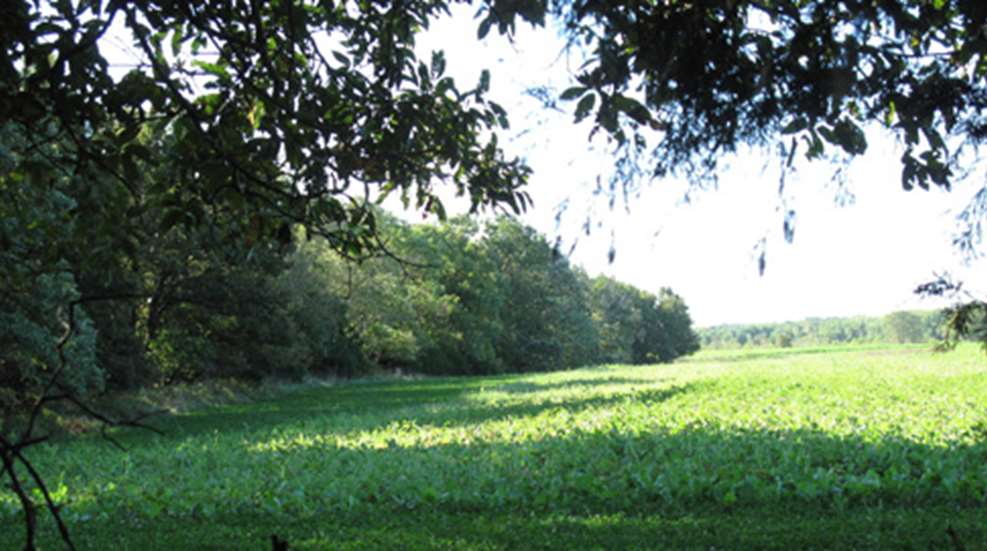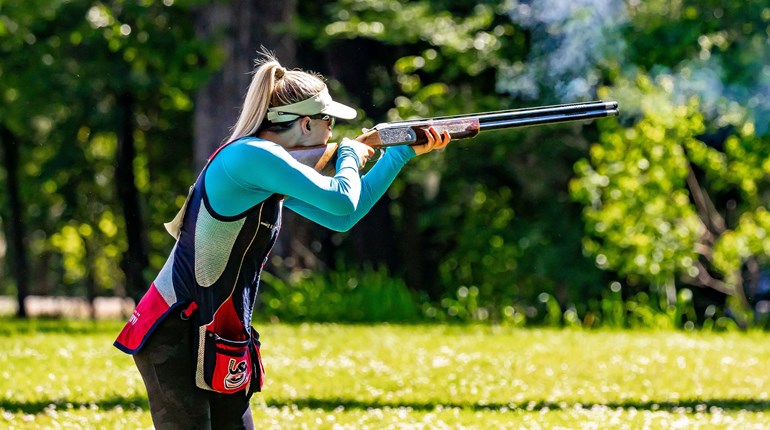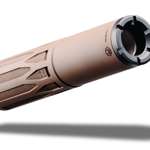
If you own or lease your own land for hunting, either by yourself or as part of a group, and you’re not doing anything to grow at least a few food plots, then you’re seriously limiting your chances for success. More than buying a new gun or bow and more than setting up a new stand or handloading the perfect round, these organic deer magnets can attract and hold whitetails in an area where they otherwise might not stay for long. This, in turn, will give you that perfect spot to hang the new stand and use that new gun, bow or load. But first you need to get something planted.
The good news is that if you are strapped for dollars and/or time, you don’t have to use a lot of either to produce a few decent plots. And don’t think because you didn’t plant anything in the spring that it’s too late to do anything for the year. In fact, summer is the perfect time to begin your efforts at getting something in the ground. While typical spring plantings of seeds such as clover and beans will actually help deer grow larger courtesy of the nutrients they provide throughout the antler-growing season, late summer or fall plots actually fit into the category of attractants and work great in this capacity. Planting now won’t do much to help grow big antlers, but it will keep the big boys with antlers—and the does they will be seeking during the rut—nearby with a ready food source. Here’s what you need to get started.
Identify Planting Areas
Hopefully your property already has a few open areas you can merely mow and disc in preparation for planting. Whether you simply want to expand where your plots go or you are starting from scratch, you’ll want to identify several different areas instead of one big one. This helps keep deer focused in different areas that will suffer less hunter pressure and provide more stand options once the season arrives. Ideally, you want plots that are a half-acre to an acre in size, though quarter-acre plots are not uncommon and can still do very well. By planting plots no smaller than that, you avoid the risk of overbrowsing by deer that will decimate the plot before it fully matures. That is another reason for spreading plots out rather than concentrating all of your growing efforts in one place.
Look for open or easily opened spots that are close to heavy cover that deer can use for bedding and staging, are away from public roadways and that are along normal whitetail travel routes such as along a creek or stream or adjacent to a cutover so deer will continue to move through and discover your plantings. If you don’t own the land, it is unlikely a landowner is going to allow you to clear out trees, so in addition to existing clearings or fields, consider open log decks, rights of way and wide paths as well. Plots are best laid on flat ground that retains good moisture and in a south-to-north orientation so that they receive equal measures of sunlight throughout the day. They also aren’t exposed to the sun so much that they get scorched on super hot days like the ones we’ve been experiencing this summer.
Plot Prep
One of the most important things you can do before planting is to take soil samples of those areas you wish to have planted and have them tested by your local soil and conservation office or by a company such as Whitetail Institute. A good soil test will tell you precisely how much lime and fertilizer will be needed to get the best growth out of your seeds. And don’t think for a second that you can get away without it. Over recent years as we’ve ramped up our planting efforts, my hunting partners and I have learned just how critical lime and fertilizer are.
“A soil test can be the difference between your best food plot or total disaster,” said the Institute’s Steve Scott. “If your soil needs more lime, you have to do that before you spend money on anything else.”
Lime is critical in bringing your soil to the proper pH, which will allow your seeds to get the most from fertilizer and reach its full potential.
“You can put the best seeds out there with fertilizer, but it’s like being at a buffet and having your mouth wired shut,” Scott added.
The first year my friends and I planted plots on our Virginia property, we tried to escape the cost of lime and too much fertilizer. The end result? We might as well have not wasted our time or money on the seed that we bought as the plots did horribly. At Scott’s “I told you so,” we got soil samples the next year, invested in the necessary lime and fertilizer, and the results were dramatically improved.
Plant It
When exactly to plant your food plot can be a balancing act between making sure late summer rains will actually fall within a few days of planting and not waiting too long to provide at least 60 good growing days before the first frost. Prep your fields by disking the soil thoroughly and mixing in lime and fertilizer. Then watch the weather for a day that promises steady, yet gentle rains. A frog-strangling downpour should be avoided as it can actually wash seeds into overly concentrated rivulets and toward the edge of the fields.
Top plantings for this time of year include wheats, rye and oats—which grow quickly; brassicas, such as turnips—whose leaves will turn sweet upon the first hardy frost and even clover—which puts down roots quickly and stabilizes the soil, but will go dormant in cold weather until the following spring. Leading companies such as Whitetail Institute, Hunter’s Specialties, Biologic, Evolved Habitat, Pennington and others all produce excellent seed blends designed specifically for quick growth and maximum attractiveness when planted in late summer and that often include a mix of different types of seeds.
Follow coverage instructions exactly as listed on the bag of each mix and use a broadcast spreader mounted on an ATV or tractor or even a hand spreader, if that is all you have available. Cover the area to be planted and then lightly drag the soil after planting with an ATV and a section of chain link fence or log to just cover the seeds with soil. Never plant seeds too deep. If you get the seeds in the soil just before rains, plants will begin sprouting within days, and by hunting season, should be bringing deer right to your plots where you will be waiting, gun or bow in hand.
Top Fall Planting Choices
Whitetail Institute Pure Attraction—This is an excellent mix that includes oats, winter peas and brassicas that grow quickly, providing food throughout the rut and into late winter. A 26-pound bag plants a half acre.
Biologic Full Draw—Designed to germinate quickly, Full Draw is an exception in that it can be planted with as little as 30 days before the first frost. The mix contains New Zealand brassicas, clover, wheat and grains.
Hunter’s Specialties Vita-Rack E-Z Grow—This mix of King Annual Ryegrass, Dwarf Essex Rape and three different types of clovers is designed to produce up to 36-percent protein. A 5-pound bag covers a quarter acre.
Evolved Habitat ProGraze—This mix offers a blend of perennial and annual forage seeds with brassicas for the winter months that will establish and protect the clovers and chicory until they are established. Eight pounds covers 1 acre.




































